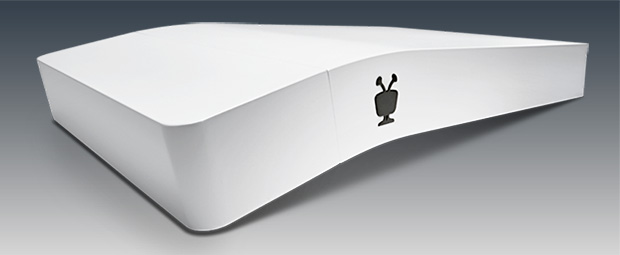I watched with interest last week’s Republican debate and realized very quickly that whatever that was on my TV, it sure as hell wasn’t an actual debate. The idea is for us to be able to compare the qualifications and positions of a variety of candidates and then make a more informed choice — but if every candidate is asked a different question, then how do we compare the answers?
Also, wouldn’t the best debate require having all of the candidates on stage? It often seems that the candidates are all debating folks from the other party who aren’t in the same room they are.
Seriously, wouldn’t this work better if it were more like a good job interview? First you have a set of focused events, during which you ask pointed questions about individual backgrounds. Then you put the folks who survive that process on stage, and ask about how they’d apply their skills to real problems. From that group, you choose the best.
It seems strange that Americans likely put more rigor into hiring a gardener than in selecting the next leader of the free world. Tech could fix that.
I’ll close with my product of the week: the TiVo Bolt, which is clearly the best DVR ever built — and it has to be to compete with the cord-cutter solutions.
The Problem With the Debates
One of the big problems with the current debate format, regardless of the network in charge, is that it doesn’t produce debates. Debates consist of two or more people arguing on a common subject and then being scored not only for their presentation, but also for their accuracy. The current debates are more like reality TV. The drama value is high, with questions that probe topical personal subjects, but there is really no consistent focus on the same critical issues.
The debates effectively function kind of like a dramatic beauty pageant — and ironically, women are at a disadvantage rather than being advantaged, as would be more typical — and we end up picking the person who comes across as most likable and most consistent with the status quo (white male), or most consistent with what is currently politically correct (minority) but never the most qualified.
Given that our lives may depend on the result, I think we should focus instead on the most capable candidate, period. Yet the debates don’t give us what we need to make that decision.
The Personal Interview
The best process, ideally, would be for each of us to interview the candidates individually to better understand their unique skills and background, and to ask common questions that are important to us to a panel of the ones who pass the first step, so we can assess who is more likely to do what we want.
Ideally, all would be attached to some kind of accurate lie detector, so we could be sure what they said was the truth. If you’ve been reading the fact-checking reviews, it seems these folks all are running to be liar-in-chief (Republican fact-checking here, Democratic here).
Personally, I think telling the truth has less to do with party affiliation and more to do with how long the individual has been in politics. The longer that is, the more optional the truth seems to be. That is probably because we seem to elect folks with the most compelling lies. Of course, even the fact checkers sometimes have issues.
The problem is, that wouldn’t scale — and you have to admit, the reality show thing is pretty entertaining — particularly when the debaters attack the moderators. (The Chris Christie thing about fantasy football still has me chuckling.)
Digital Avatar
There are a number of digital immortality projects that will take the old Disney animatronics thing and potentially create a relatively accurate snapshot of who a person was — a snapshot that theoretically would be immortal.
A politically focused version would create a digital avatar that would be able to interact at scale with every voter who wanted to interview a candidate, or compare candidates as if they were in the same room. Granted, we aren’t quite there yet, but IBM’s Watson does have the potential to place a politician’s positions and background into a contextual framework that would allow you to ask real-language questions and get highly accurate responses at a scale that even could address the U.S. population. (IBM just bought Weather.Com and is tying it to Watson to create more accurate forecasts. Think of what it could do if it were programmed to select the best presidential candidate.)
An individual potentially could set up the system to emulate two candidates and have their digital representatives respond to questions at the same time, and then have them digitally scored, both for accuracy on real facts and for how well they met the voter’s personal profile.
To make it appear more real, you could feed Watson’s most likely responses through a text-to-speech Siri or Cortana interface into a real-time animated image of the candidate, and likely get a more consistent result than if you were talking to the candidate personally. (For fun, you could change their voices and image. Imagine Donald Duck as Donald Trump and Miss Piggy as Hillary Clinton for instance). Bet you even could get your kids to watch that.
In fact, if you were pressed for time, once you uploaded your personal profile to Watson, the system likely could do a better job of picking the best candidate for you than you could yourself. We’ll soon have something close to doing this: an app under development called “CandiDating.” Developed by an MBA candidate at Babson College, CandiDating aims to point out the candidate that best matches your own beliefs and priorities.
A similar effort back in 2008, Pick Your Candidate, showed me (and I’m a moderate Republican) that a moderate Democrat better matched my positions than any Republican candidate did. Sadly, he never made it through the primaries. A similar app, SelectSmart, seems to be current for this election (and it is kind of fun to see who you should vote for).
In my case, the top result was George Pataki — but his positions matched mine only 59 percent of the time. Bernie Sanders and Rand Paul were both at 49 percent for different reasons. Carly Fiorina came next, followed by a tie between Chris Christie and Hillary Clinton at 47 percent (I like Christie, but I’m not a fan of Clinton). But heck, I’d never even have considered Pataki.
Wrapping Up: Making Better Choices
Most of us vote personalities or along party lines, but technology could help us make far better decisions and perhaps get folks into office who are a tad more qualified and certainly more aligned to our own beliefs and interests. Granted, we could take one more big step and do computer modeling, which would give us a better idea of which candidate actually would get what we wanted done, because at the end of the day, what candidates want to do matters less than what they actually can get done. Tech could help us there too — and I expect that it eventually will make all of us better voters.
Until then, maybe a real-time app that simply would point out when a candidate was lying would be the most useful. We could even turn it into a drinking game, if we weren’t afraid of dying from alcohol poisoning.
TiVo sent me the new Bolt, and I’ve been playing with it for about a week now. I’m a long-time TiVo user, and was one of the first to use the product when it launched in the late 1990s. Over time, TiVo has added tuners (up to six), support for streaming-TV services like YouTube, Netflix and Amazon Prime, and a variety of music services that I don’t use on a TiVo.
Like most guys I know, I’m not a fan of following directions. Products that aren’t plug and play generally annoy me a lot, but TiVos are mostly plug and play. The TiVo Bolt follows this formula, and while it has just four tuners, given the shift to streamed content, that’s likely all most people really need.

It comes either in 500-GB or 1-TB (US$100 difference) models with one year of TiVo programming, which has a value of around $20 a month. Since it starts at $299, that’s a pretty decent deal.
With TiVo Mini set-top boxes at $150, or with Amazon Fire TVs (with the TiVo app in beta) at $39 to $99, you can move the programming around your home. Unfortunately, it doesn’t integrate with Alexa yet, so voice-command is out.
You can stream your programming either to an Android or iOS tablet or smartphone, which is pretty handy. Actually, though, doing this while traveling overseas tends to be pretty painful. Unfortunately, TiVo discontinued the handy PC app that would let you copy your programming onto a big laptop hard drive.
The Bolt adds better performance (navigation is much faster), a one-button commercial skip function that is pretty wonderful, and a unique fast-forward function that speeds up and adjusts the sound, so you can rush through the romantic parts of action films and still not miss important plot elements.
The physical design of the product is a bit quirky — but given the heat it puts out, stacking anything over or under it generally is a bad idea anyway. It uses an RF remote, so you can put it out of sight if you want. Finally, one big improvement is that it supports 4K, WiFi, and Gigabit Ethernet, so it isn’t a network hog — not does it require a wired connection, which would limit network connectivity.
Overall, I’m pretty impressed with the improvements, which generally move the TiVo line in-line with other products in the market. Now, if the company could just make one of these in black… . Still, because the TiVo Bolt is the best DVR that I’ve ever tested and a personal favorite, it is my product of the week.
























































